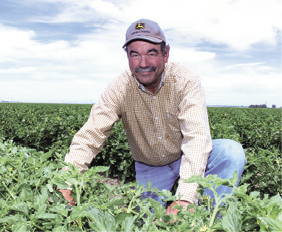From the Fields - David Richter

By David Richter, Sutter County farmer
In our area, we’re fighting geese in the wheat fields. We’re trying to scare them out of fields, using scarecrows and driving four-wheelers out towards them to get them out of the fields. Usually, they’d be out in the rice fields eating last year’s leftovers. There’s less feed for them because 90% of the rice fields were fallowed last year, so they’re hitting the wheat crops looking for food.
We also have some cover crops. There’s vetch with a little mixture of cereal grains, and the geese are flying into that. They’re eating the cereal grains, but they don’t seem to be touching the vetch. The bad thing is I go scare them out of one field, and then they fly to my other field.
The wheat is about 8 to 12 inches high. Usually, they say when it gets about 12 inches high, the geese won’t get into it, but it’s different this year. They’re getting into it. I know of about 500 to 600 acres in the area that have been destroyed. It’s too late to replant. If we get a water allocation, those fields may be planted to rice.
The wheat is recovering from the early rains, and (last week we had) another series of rain. If we get overly wet, your yields can decrease. Some of the wheat got hurt because it had too much water when it was younger.
I planted wheat because of the price and because of my rotation. The last two or three years I planted very little, and this year I planted a little bit more so I could get more out my water allocation for other crops. We’re at least two to three weeks out before we start groundwork (for tomato planting). It’s pretty wet out there, yet we’re still waiting for an official allocation of our water.




